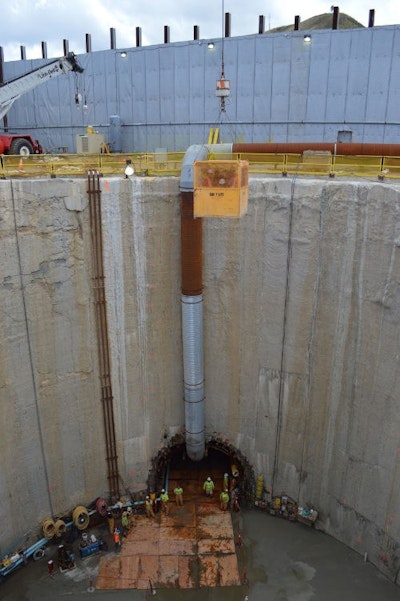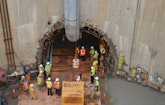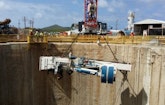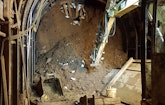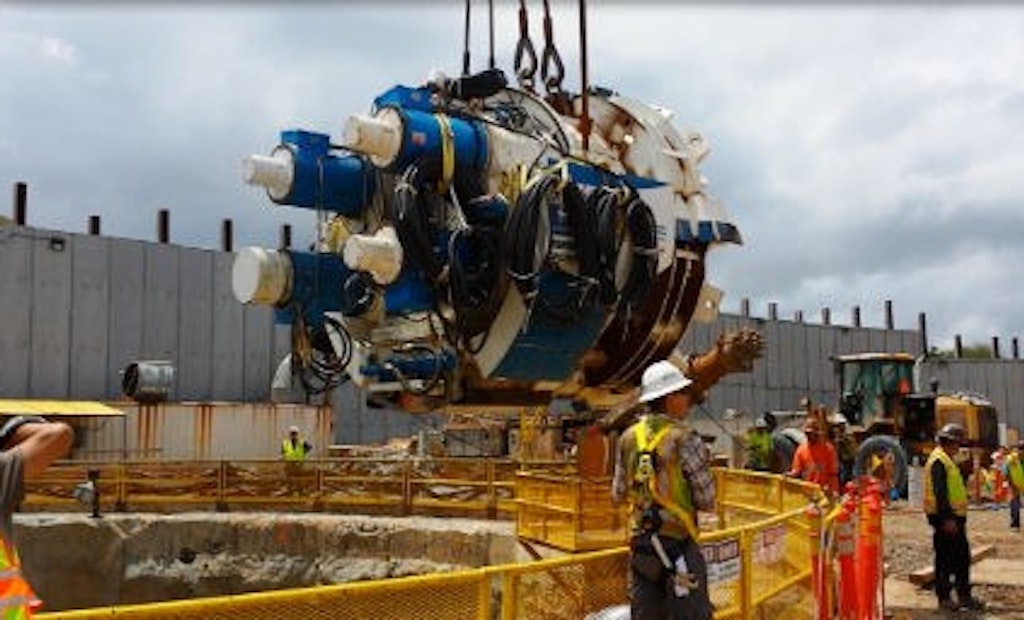Interested in Infrastructure?
Get Infrastructure articles, news and videos right in your inbox! Sign up now.
Infrastructure + Get Alerts
 After 13 months of boring beneath the Oneawa Hills, contractors have holed through on a new wastewater tunnel that will connect the Kaneohe pretreatment facility with the Kailua Regional Wastewater Treatment Plant serving the city and county of Honolulu.
After 13 months of boring beneath the Oneawa Hills, contractors have holed through on a new wastewater tunnel that will connect the Kaneohe pretreatment facility with the Kailua Regional Wastewater Treatment Plant serving the city and county of Honolulu.
The tunnel-boring machine and excavator met on the morning of June 28, and the tunnel-boring machine has been disassembled and removed. The 3-mile-long tunnel, designed to flow by gravity, is due to be finished by June 2018, after a liner piping has been installed and grouted in place and associated structures and shafts have been completed. Project cost is $173 million, and the tunneling contractor is joint venture firm, Southland/Mole Contractors. Bowers+Kubota is the local construction management firm.
The tunnel is the largest sewer project in state history, according to Honolulu mayor Kirk Caldwell.
Lori Kahikina, director of the city and county Department of Environmental Services, explains the new tunnel is an important part of Honolulu’s efforts to eliminate sewer overflows and spills, and is part of the amended 2010 consent decree.
 “The new tunnel will replace an older force main that had been subject to numerous failures,” she says. “It will also provide storage capacity for excess stormwater, mitigating against spills and overflows.”
“The new tunnel will replace an older force main that had been subject to numerous failures,” she says. “It will also provide storage capacity for excess stormwater, mitigating against spills and overflows.”
Honolulu got a cost break when the USEPA agreed to a design change from a new force main to the gravity flow approach.
Key stats
The new tunnel has been bored at a diameter of 13 feet with a 10-foot inside diameter fiber-reinforced polymer mortar pipe to be installed inside. Its route goes beneath the Oneawa Hills along Kaneohe Bay northeast of the city center at depths to 400 feet. The tunnel slopes from a depth of about 35 feet at the Kaneohe pretreatment facility down to about 82 feet at the Kailua treatment plant.
New shafts, diversion structures and odor control facilities are also part of the project. The shaft at the Kaneohe pretreatment plant will be used to construct the diversion structure that will intercept sewer lines. The shaft at the Kailua regional treatment plant will be used for construction of a tunnel influent pump station to lift wastewater to the treatment facilities. The shafts also served as the entrance and retrieval points for the tunnel-boring machine. Odor control units will be installed at both vertical shaft locations.
An intermediate shaft is also being constructed to provide emergency access during future tunnel maintenance.
During tunneling, a sound retention wall was constructed to control noise from the site that might have bothered neighbors.
The project is part of a comprehensive effort Honolulu is making to minimize wet weather overflows and spills, including new force mains underneath Honolulu Harbor, and upgraded treatment at the city’s Honouliuli and Sand Island treatment plants. Total cost could run to $5 billion.
The Department of Environmental Services is responsible for wastewater collection, treatment and disposal, as well as solid waste management for the 600-square-mile island of Oahu. The sewer system consists of 2,100 miles of lines and 70 pump stations.
Check out "Protecting Paradise From Sewer Overflows," for a complete profile on the city of Honolulu.
